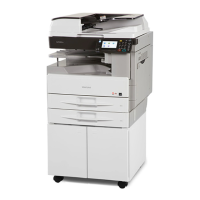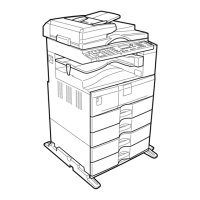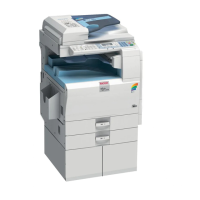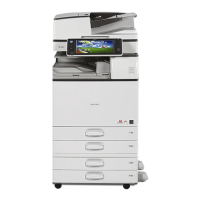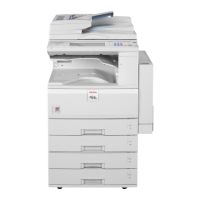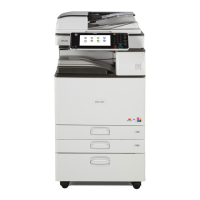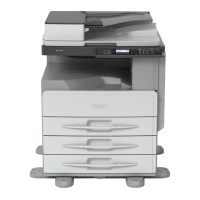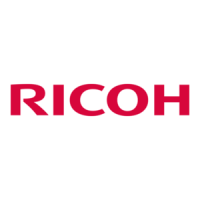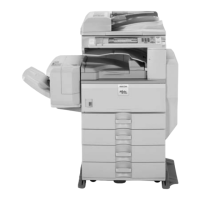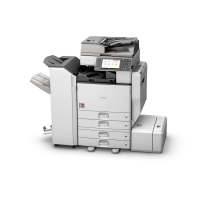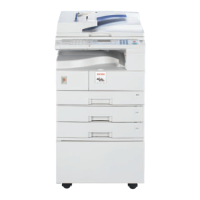| Duplex printing | No |
|---|
| Print technology | Laser |
|---|
| Maximum resolution | 600 x 600 DPI |
|---|
| Time to first page (black, normal) | 6 s |
|---|
| Print speed (black, normal quality, A4/US Letter) | 25 ppm |
|---|
| Copier resize | 50 - 200 % |
|---|
| Maximum number of copies | 999 copies |
|---|
| Scan to | E-mail, FTP, Memory Card, SMB, USB |
|---|
| Scan drivers | TWAIN |
|---|
| Scanner type | Flatbed scanner |
|---|
| Scan speed (color) | 50 ppm |
|---|
| Image formats supported | JPEG, JPG, TIFF |
|---|
| Document formats supported | PDF |
|---|
| Faxing | Mono faxing |
|---|
| Fax memory | 4 MB |
|---|
| Modem speed | 33.6 Kbit/s |
|---|
| Fax coding methods | JBIG, MMR (Fax coding method) |
|---|
| Fax resolution (black) | 200 x 200 DPI |
|---|
| Fax transmission speed | 2 sec/page |
|---|
| Maximum duty cycle | - pages per month |
|---|
| Page description languages | PCL 5e, PCL 6, XPS |
|---|
| Display | LCD |
|---|
| Control type | Touch |
|---|
| Product color | Black, Grey |
|---|
| Built-in display | Yes |
|---|
| Display diagonal | 4.3 \ |
|---|
| Market positioning | Business |
|---|
| Paper tray media types | Plain paper |
|---|
| Paper tray media weight | 60 - 105 g/m² |
|---|
| ISO A-series sizes (A0...A9) | A3, A4, A5 |
|---|
| ISO B-series sizes (B0...B9) | B4, B5, B6 |
|---|
| Maximum ISO A-series paper size | A3 |
|---|
| Multi-Purpose Tray media weight | 60 - 162 g/m² |
|---|
| Wi-Fi | - |
|---|
| Cabling technology | 10/100/1000Base-T(X) |
|---|
| Ethernet LAN data rates | 10, 100, 1000 Mbit/s |
|---|
| Supported network protocols (IPv4) | TCP/IP |
|---|
| Standard interfaces | Ethernet, USB 2.0 |
|---|
| Optional connectivity | Bluetooth, Parallel, Wireless LAN |
|---|
| Compatible memory cards | SD |
|---|
| Maximum internal memory | 1536 MB |
|---|
| AC input voltage | 220 - 240 V |
|---|
| AC input frequency | 50 - 60 Hz |
|---|
| Power consumption (max) | 1550 W |
|---|
| Power consumption (ready) | 113 W |
|---|
| Power consumption (sleep) | 0.6 W |
|---|
| Power consumption (average operating) | 892 W |
|---|
| Energy Star Typical Electricity Consumption (TEC) | 1.082 kWh/week |
|---|
| Sustainability certificates | ENERGY STAR |
|---|
| Paper input type | Paper tray |
|---|
| Total input capacity | - sheets |
|---|
| Total output capacity | 350 sheets |
|---|
| Maximum input capacity | 1600 sheets |
|---|
| Mac operating systems supported | Mac OS X 10.10 Yosemite, Mac OS X 10.11 El Capitan, Mac OS X 10.12 Sierra, Mac OS X 10.13 High Sierra, Mac OS X 10.5 Leopard, Mac OS X 10.6 Snow Leopard, Mac OS X 10.7 Lion, Mac OS X 10.8 Mountain Lion, Mac OS X 10.9 Mavericks |
|---|
| Linux operating systems supported | Red Hat Enterprise Linux WS 4.0, Red Hat Enterprise Linux WS 5.0, Red Hat Enterprise Linux WS 6.0 |
|---|
| Other operating systems supported | IBM AIX 5.3, IBM AIX 6.1, IBM AIX 7.1, Novell NetWare 6.x |
|---|
| Server operating systems supported | Windows Server 2003, Windows Server 2008, Windows Server 2008 R2 |
|---|
| Windows operating systems supported | Windows 7, Windows Vista, Windows XP |
|---|
| Bundled software | SmartDeviceMonitor, Web SmartDeviceMonitor, Web Image Monitor |
|---|
